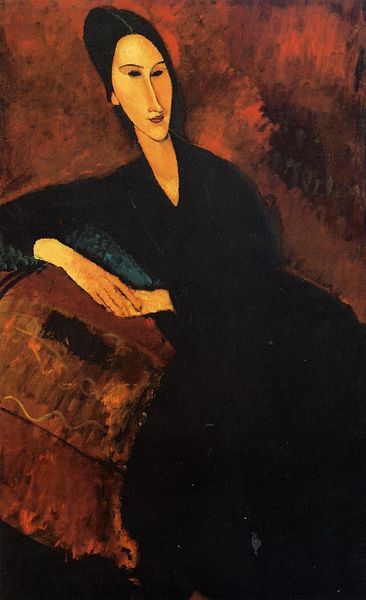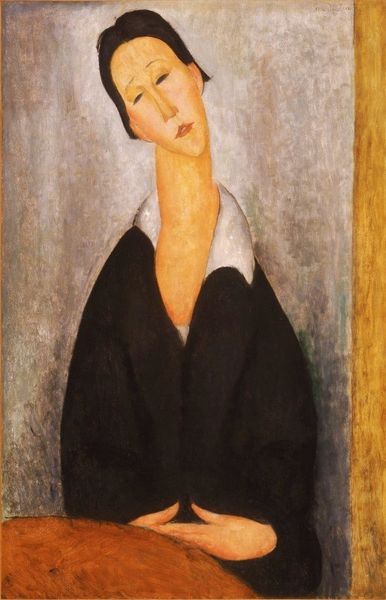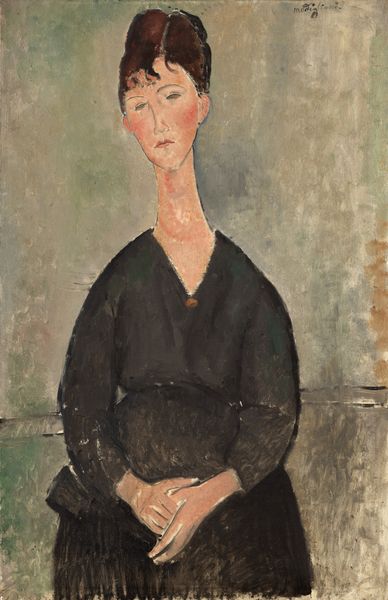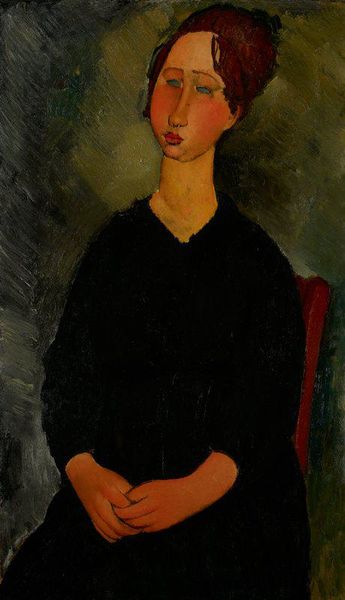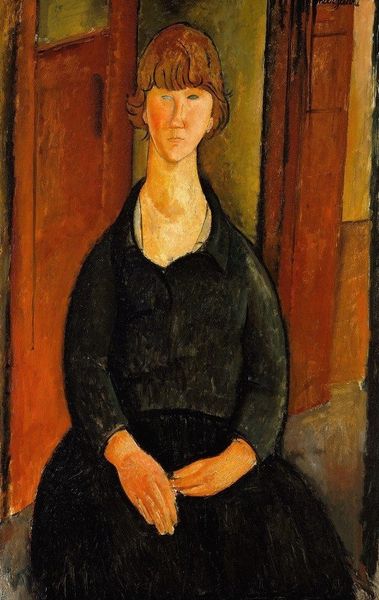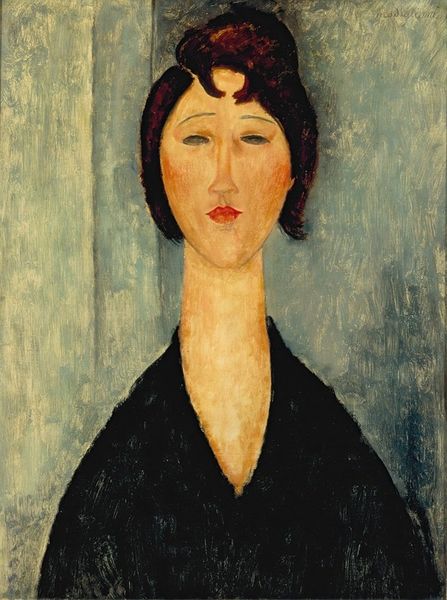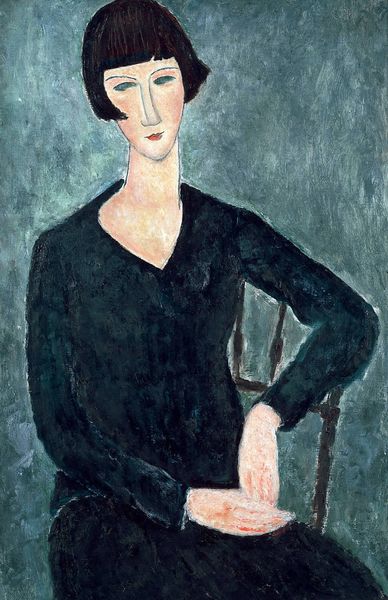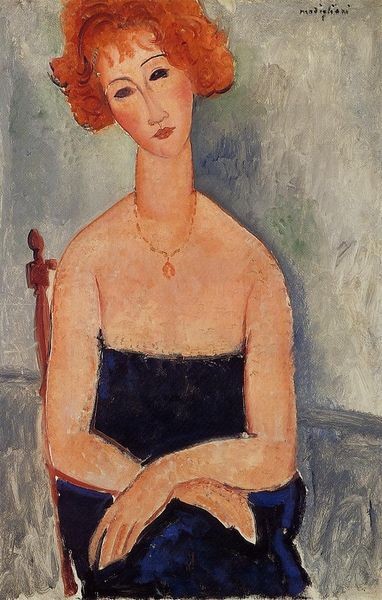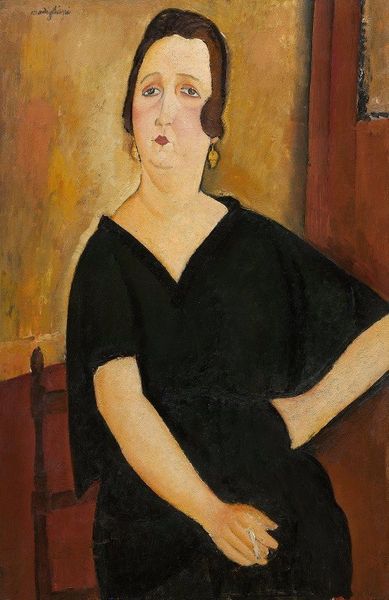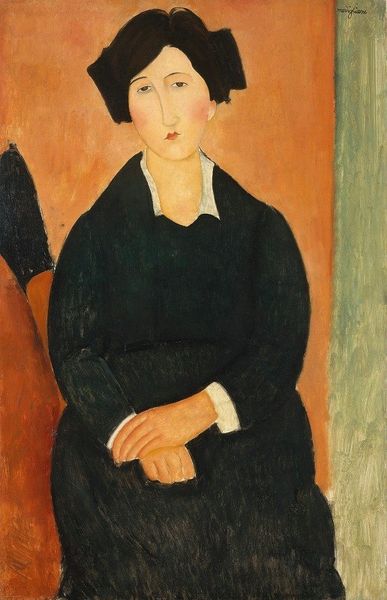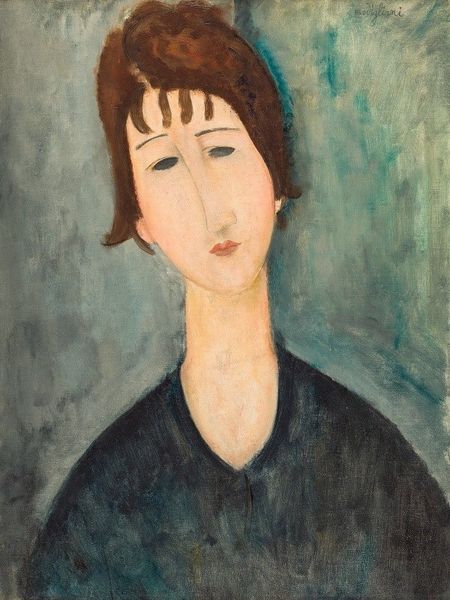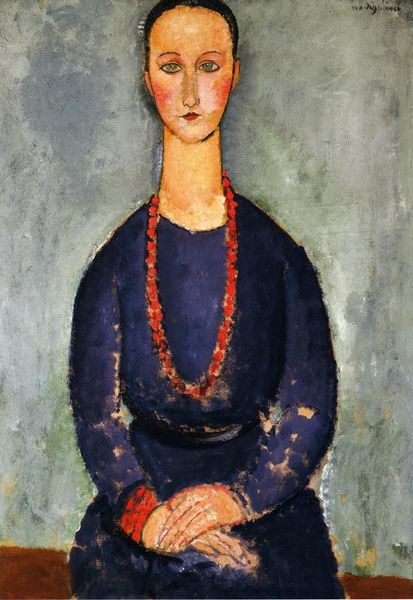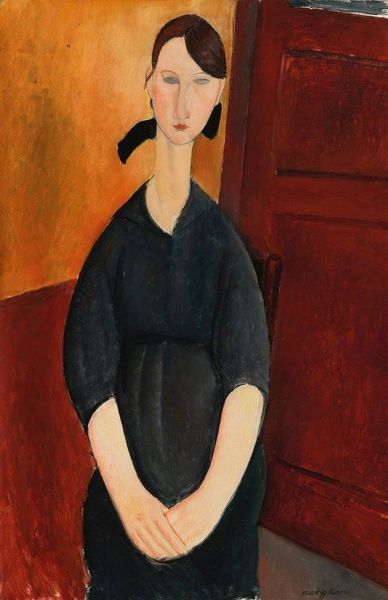
Woman with a Green Necklace (Madame Menier) 1918
0:00
0:00
amedeomodigliani
Fujikawa Galleries, Tokyo, Japan
#
portrait
#
portrait reference
#
portrait head and shoulder
#
animal portrait
#
animal drawing portrait
#
portrait drawing
#
facial portrait
#
lady
#
portrait art
#
female-portraits
#
fine art portrait
#
celebrity portrait
#
digital portrait
Dimensions: 99.1 x 59.7 cm
Copyright: Public domain
Editor: Here we have Amedeo Modigliani's "Woman with a Green Necklace," painted in 1918. I’m struck by the contrast between the vibrant green necklace and the woman’s melancholic expression. What are your thoughts on how Modigliani uses color and form to communicate the subject’s persona? Curator: That's a fantastic starting point! Consider the socio-political context: it's 1918, the tail end of World War I. How might the pervasive atmosphere of loss and uncertainty be reflected in this portrait? Modigliani often portrayed his subjects with elongated features, echoing African masks and Cycladic sculptures, reflecting his interest in primitivism. How does this stylistic choice intersect with the concept of exoticism and the colonial gaze, prevalent at the time? Editor: That's a perspective I hadn't fully considered. I was focused on the individual, but placing it within a larger historical frame changes things. Could you expand more on the relationship to Primitivism? Curator: Absolutely. Many artists during this period, including Picasso and Matisse, were fascinated by non-Western art, often appropriating its forms. However, this fascination often overlooked the cultural significance and agency of the original creators. Does Modigliani's stylized representation perpetuate or challenge this power dynamic, especially considering the limited representation of women artists and people of color at the time? The ‘mask-like’ face here encourages us to unpack deeply engrained attitudes to power, gender, and race. Editor: I see what you mean. The act of representation itself becomes a political statement. So, understanding the historical context helps us become more aware of potential biases. Curator: Exactly. By questioning these power dynamics within art history, we gain a better understanding of the complex intersectional narratives at play. It's about reading art with a critical and informed lens. Editor: I hadn’t considered how the historical period and his influences shape how we see and understand the portrait today. Thanks for this thought-provoking discussion!
Comments
No comments
Be the first to comment and join the conversation on the ultimate creative platform.
